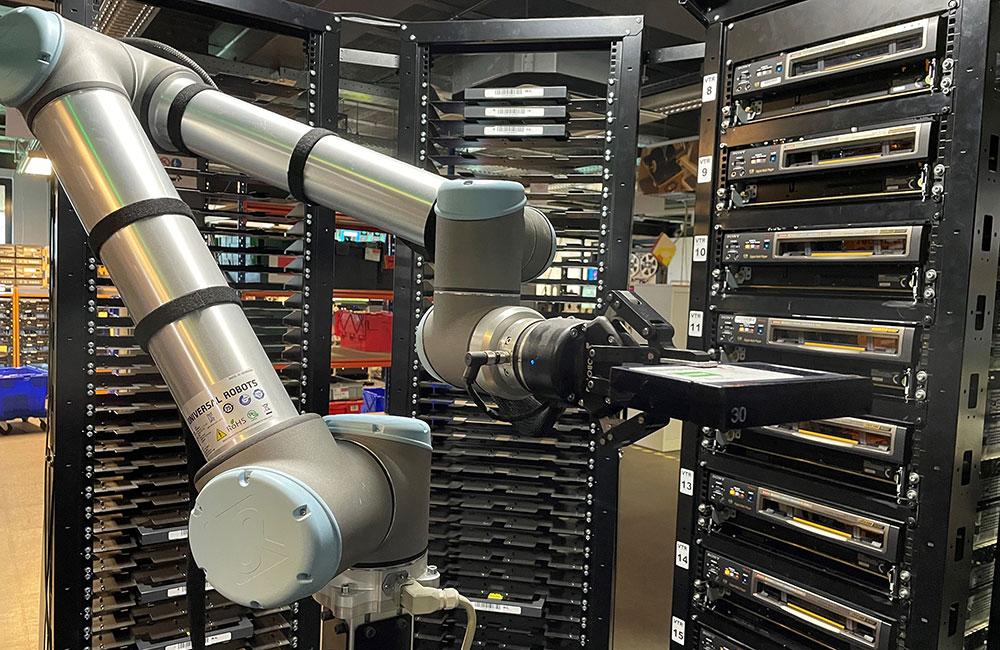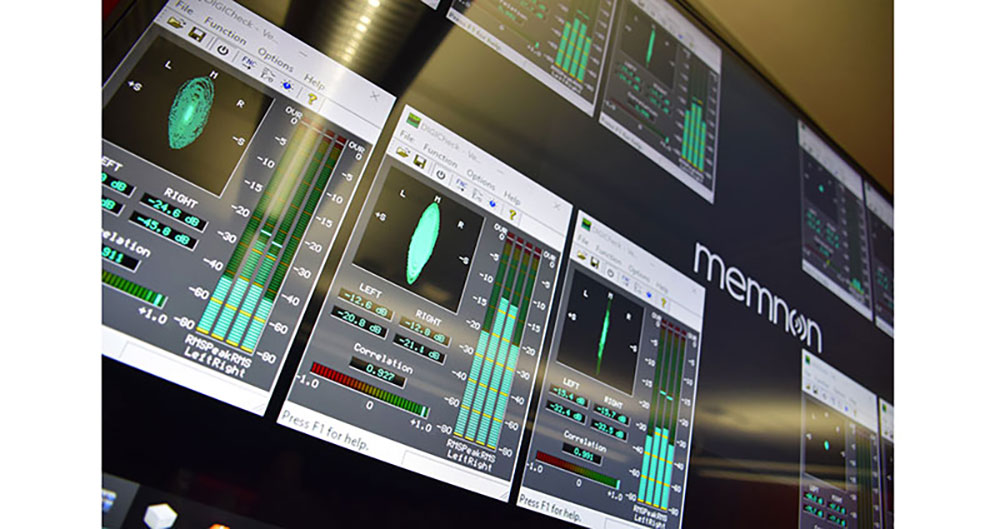Memnon and Telefónica Servicios Audiovisuales are undertaking a 3-yr project to digitise over 200,000 Betacam tapes for long-term preservation of and access to the region’s video history.

Memnon's workflow will take advantage of robotics, orchestration and automated tracking.
Spain's public media company, Radio-Televisión Española (RTVE), has undertaken the creation of an audiovisual archive preserving nearly 200,000 hours of content from Spanish public television archives. The project involves an estimated 205,035 Betacam tapes belonging to RTVE’s divisions in 12 regional centres across the Spanish territory, as well as a production centre in the Canary Islands.
Broadcast and audiovisual specialist Telefónica Servicios Audiovisuales (TSA) is responsible for the project management, infrastructure supply and coordination of the archive, and has formed a partnership with Memnon, a content preservation and migration services provider. The two companies have agreed to a three-year contract to supply digitisation and migration services for the tapes.
Speeding Up Migration
Due to the size of the video archive, Memnon’s support was enlisted to speed up the broadcaster’s efforts to migrate its tapes. The project is anticipated to result in more efficient production for RTVE when using the content, and save on space and maintenance costs for assets with demanding conservation requirements. It will also facilitate access to and dissemination of this regional content and enable the use of AI techniques such as voice transcription and automatic indexing for all digitised content.
The historical archive of a public TV network is a very valuable asset for a public media entity like RTVE, as it captures the history of a country. Alberto de Prada, Director of RTVE Documentary Fund, commented on the project’s goal and background. “Through this project, RTVE completes the digitisation of the territorial centres’ video archives, guaranteeing the preservation of the collective memory of various autonomous communities.
“A total of 14 newly digitised archives are now incorporated into the RTVE Documentary Fund. The digitisation initiative of RTVE’s video archives, which initially involved Telefónica, has now reached its completion with the addition of Memnon, resulting in almost 600,000 hours of digitised content since the project began in 2008.”

Digitisation Infrastructure and Systems
Telefónica Servicios Audiovisuales will work with Memnon to make sure each step of the migration process meets quality and security standards. The work starts with selecting, packing, palletising and transporting the tapes from RTVE’s regional centres to Memnon’s media processing facility in Brussels. TSA is also responsible for RTVE’s infrastructure expansion to accommodate all the new content that will be digitised, such as supplying extra hardware and software including servers, storage and MAM features.
TSA is supplying infrastructure to Memnon’s facility to ease the integration with RTVE’s existing system, as well as human and technical resources to verify files against tape information, so that the content can be standardised into RTVE’s existing format. This approach also makes it possible for human quality checks to be carried out remotely. Because this project involved a large number of interrelated processes, Digital Media World took the opportunity to ask Memnon’s Customer Service Representative Edwin Van Driessche about some of them, including tape-to-file verification.
Verification
Edwin said, “Media operators verify new files against tapes through a systematic comparison process that typically involves viewing both the old media and the new files to monitor accuracy and fidelity during digitisation. Our media operators also have a range of workflow tools to rely on – to check the migration of video sources in real-time, for example.
“By integrating legacy equipment such as VTRs with modern technology and manual processes such as five-point quality control checks, we have developed procedures that allow us to produce an accurate copy of the original asset at the best possible quality.
“We design our automated processes to closely analyse new media, guaranteeing consistency and accuracy throughout the digitisation workflow. In addition to using new methods, our extensive human expertise, developed over years of experience, significantly enhances the reliability of the transfer process for old media.”
Planning – Defining the Project
The fact that RTVE’s archive is entirely composed of Betacam tapes and requires processing just one media format ultimately made the project much simpler than the diverse archives Memnon sometimes handles, especially when working with such large volumes of content. “However, even in the case of Betacam, there are several different varieties, each with its own particularities and all requiring special attention, as many factors can influence processing," Edwin said.
“Clients with diverse archives containing various media types present unique challenges. In those cases we employ adaptable workflows and specialised equipment to handle different media formats efficiently. Each project we work on begins with a planning phase when we consider formats alongside many other factors like age, condition and even location of the assets we will be handling.
“Planning also looks at practical elements for the client such as priority items, the timescale for delivering certain assets, any specific reporting and tracking requirements the client may have, and the delivery format and method. These, in turn, are influenced by the client’s intended use of the assets once they are converted into files. From this planning phase, we will define and agree on a workflow customised to the exact needs of the project and client.”
Robotics, Orchestration, Automation
The workflow Memnon will use to complete this project will be designed to take advantage of robotics, orchestration and automated tracking and reporting. Customised workflow design with a tailored approach is a standard service at Memnon. “We know that every project will be different, with many factors at play,” said Edwin. “Understanding the parameters of each job at the outset is critical not only to delivering the required assets but also to achieving the efficiencies that come with automated mass migration. In other words, efficiently automating migration without compromising the final assets is key.
“Depending on the media type, we make several additional processing options available, such as format conversions, aspect ratio changes, audio editing and post-production treatments. Many customers also ask us to migrate their paper documents or identifier referencing, and we do our best to adapt to those requests.”
Humans, Too
To achieve round-the-clock ingest and sustain optimal throughput efficiency, Memnon will employ a proficient, experienced team of media operators, working three-person shift rotations. The hardware, software and devices used in Memnon's workflows come from a combination of tools developed over time by their in-house R&D team, and strategic partnerships with third-party vendors to ensure the best-fit equipment for each client. Over the years, Memnon has steadily developed its techniques and accumulated devices, often no longer sold anywhere except on the second-hand market.
Edwin said, “Our inventory of legacy equipment is one of the largest and most comprehensive in the world. Sourcing our hardware, software and devices this way has enabled us to be largely self-sufficient in all of our contracts.
"Human intervention will be strategically integrated at critical points throughout the process as well because, although the automated processes deliver substantial benefits in time efficiency, scalability and cost-effectiveness, the manual processes act as a safeguard. They ensure the integrity of the migrated files by imposing qualitative checks at key moments such as tape preparation and quality control.” memnon.com




















